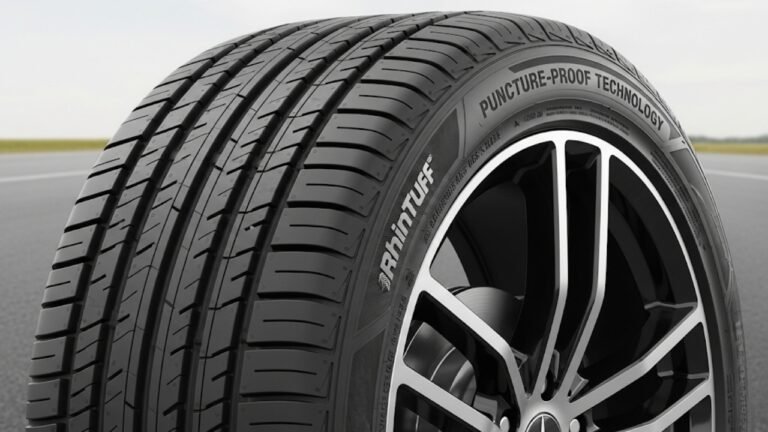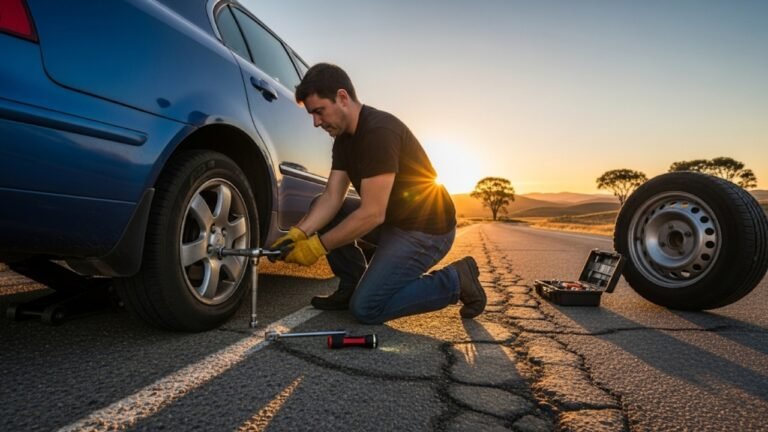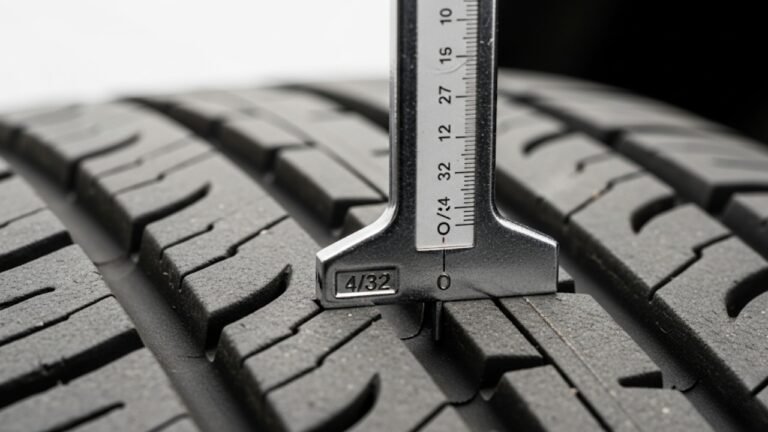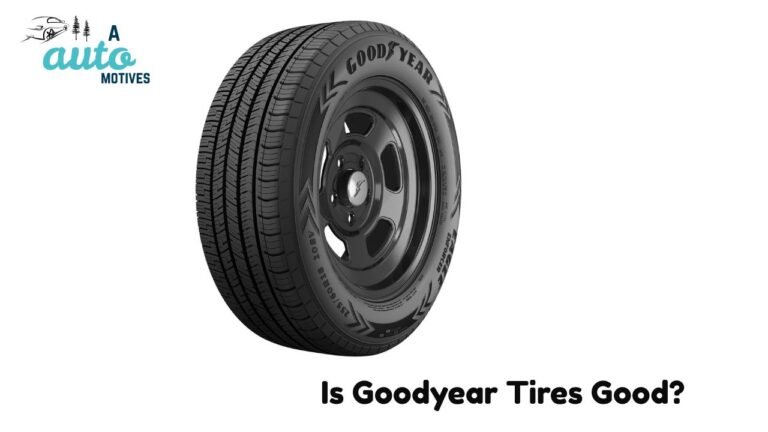What Is a Tire Rotation and Balance? A Friendly Guide
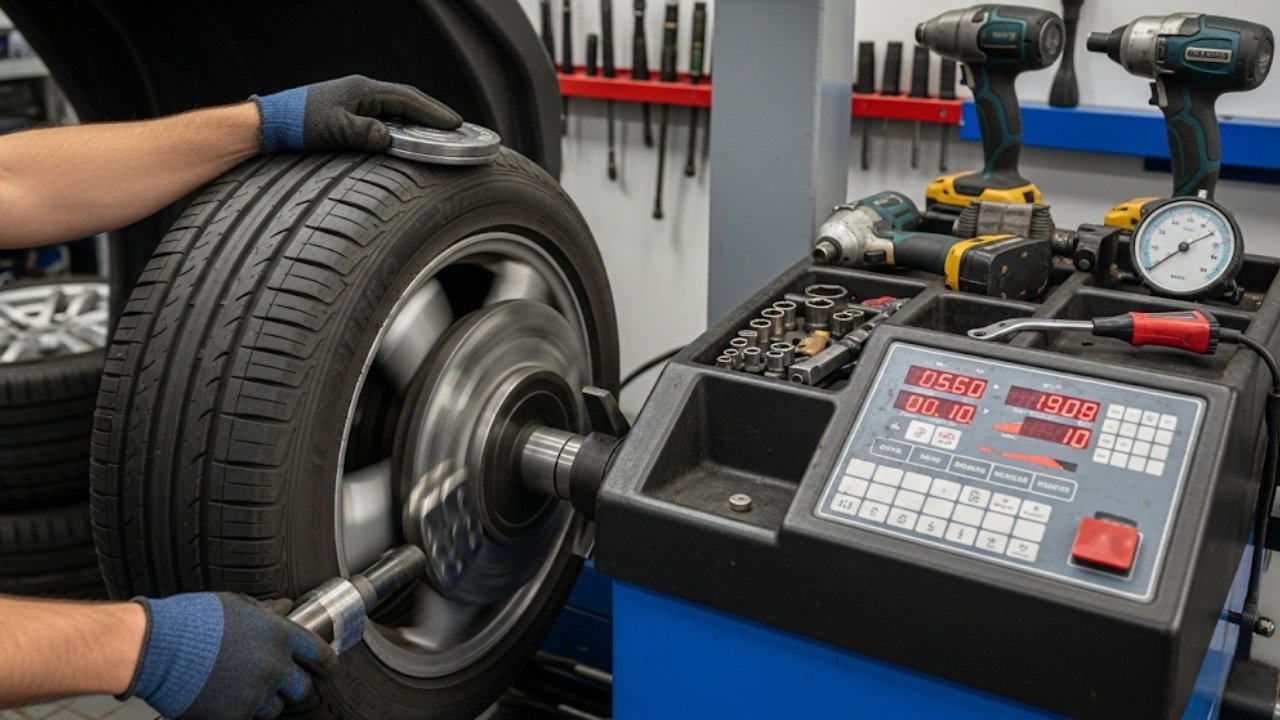
Have you ever driven your car and felt a strange vibration in the steering wheel or noticed that one tire seems to wear out faster than the others? You’re not alone. These small annoyances often point to a simple but powerful solution: tire rotation and balance. Think of your tires like your shoes—if you wear the same pair every day and walk the same path, some parts wear out quicker. The same happens to your tires, just faster.
In this article, we’ll walk through what tire rotation and balance really mean, why they matter, and how they can save you time, money, and even a dangerous situation. I’ll share a few real-life stories, use easy words, and keep things friendly—like chatting with a neighbor over coffee.
What Is Tire Rotation and Balance?
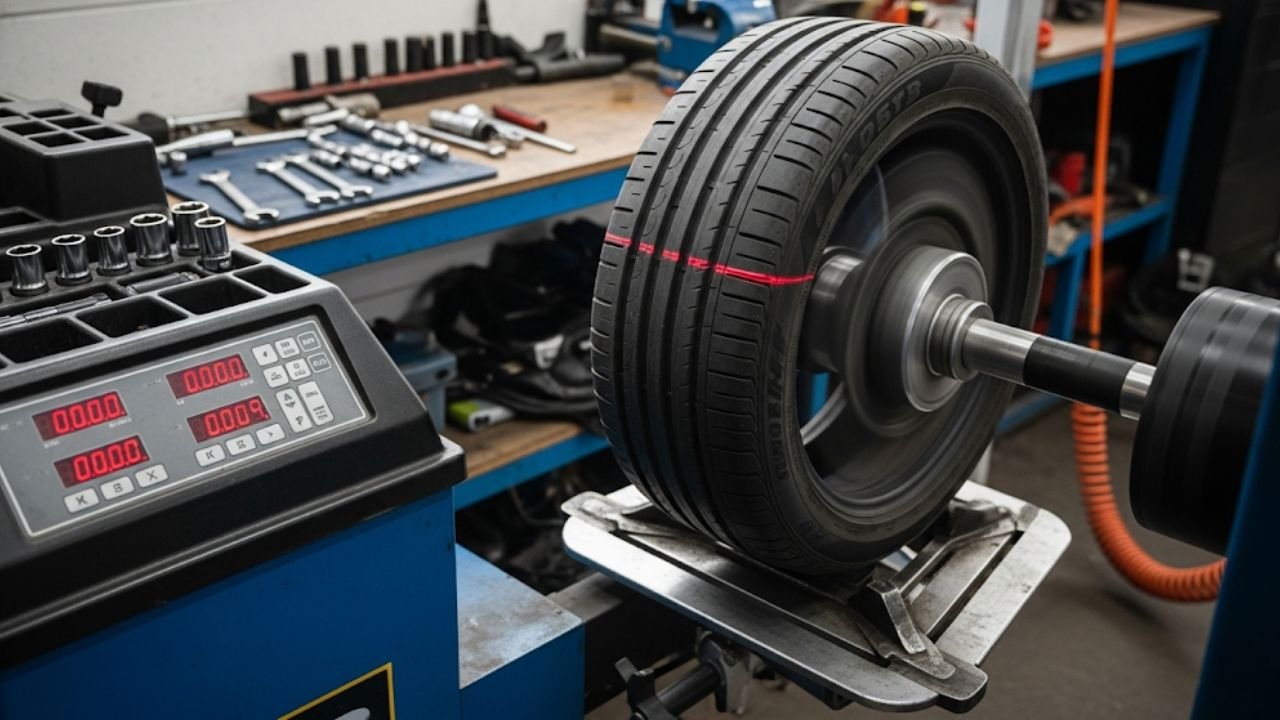
Imagine spinning a washing machine with a heavy jacket stuck to one side—it thumps and shakes. Your tires do the same when they’re out of balance.
Tires don’t wear evenly because of how the vehicle distributes weight and the direction the tires turn. The front ones usually wear faster due to turning and braking. If you don’t rotate your tires, you’ll end up replacing one pair long before the others. Worse, uneven tires can mess with your car’s stability and traction.
Tire balancing involves adding small weights to the wheel. These balance out any heavy spots. When tires are properly balanced, your ride becomes smoother, your tires last longer, and your suspension system doesn’t suffer as much.
So, what is a tire rotation and balance? It’s a simple act of love you give your car that pays back in safety, comfort, and cash.
Why Tire Rotation and Balance Are Crucial for Every Driver
Let me share a quick story. My friend Megan once ignored her mechanic’s advice to rotate her tires. Six months later, she ended up with two bald front tires and a scary hydroplaning experience on the highway during a storm. That moment changed her approach to car care.
Here’s why tire rotation and balance are non-negotiable:
-
Safety: Even tread = better grip = more control.
-
Savings: You won’t need to buy new tires as often.
-
Comfort: No more annoying vibrations or steering wheel wobble.
-
Fuel Efficiency: Balanced tires roll better, saving gas.
-
Suspension Health: Reduces strain on shocks and struts.
Without regular rotation, tires wear unevenly, and uneven wear leads to uneven handling. And when your tires are unbalanced, the tiniest wobble at 30 mph turns into a big shake at 60 mph. That’s not just annoying—it’s dangerous.
These two simple services work together to keep your vehicle at its best. Think of them as regular health checkups for your car.
When Should You Rotate and Balance Your Tires?
Most automakers recommend doing a tire rotation and balance every 5,000 to 7,500 miles, which often lines up with oil changes. But always check your owner’s manual for your vehicle’s specific advice.
Here’s a general guide you can follow:
| Vehicle Type | Rotate & Balance Every | Notes |
|---|---|---|
| Front-Wheel Drive | 5,000–7,500 miles | Front tires wear faster |
| Rear-Wheel Drive | 6,000–8,000 miles | Rear tires take more stress |
| All-Wheel Drive | 5,000–7,000 miles | Even wear needed to protect system |
| Performance Vehicles | 3,000–5,000 miles | Soft tires wear quicker |
A good rule of thumb: Do it with every oil change unless you’re driving very little or mostly on highways.
Also, get a balance check if:
-
Your steering wheel shakes
-
You feel vibrations above 40 mph
-
You’ve hit a pothole or curb hard
-
You’ve installed new tires
How Is Tire Rotation Done?
This part’s kind of cool—like solving a puzzle. The way tires are rotated depends on your vehicle type:
-
Front-Wheel Drive: Front tires go to the back. Rear tires move to the front, switching sides.
-
Rear-Wheel Drive: Rear tires go to the front, and front tires move to the back and switch sides.
-
All-Wheel Drive: Often done in an X-pattern, swapping diagonal tires.
-
Directional Tires (arrow treads): Only front-to-back, same side.
A mechanic uses a jack, loosens the lugs, and repositions each tire carefully. It’s quick, usually 30–45 minutes. Some DIYers do it at home, but it’s best to have a pro check the balance at the same time.
Remember: if your car has a full-size spare tire (not a donut), it should be part of the rotation schedule, too!
⚖️ What Happens During Tire Balancing?
You might not see this part, but it’s just as important. When you get your tires balanced, your mechanic will:
-
Mount your tire on a balancing machine.
-
Spin it to measure any heavy spots.
-
Add small weights (usually clip-on or stick-on) to balance it.
-
Recheck to ensure it’s spinning evenly.
Think of it like tuning a guitar string. A slight tension mismatch throws off the whole harmony. An unbalanced tire can create vibrations, stress your suspension, and wear down tire tread in weird patterns.
I once drove with a slightly unbalanced tire for months because I didn’t realize what the shaky wheel meant. When I finally got it checked, the mechanic showed me how my tire had worn out unevenly, cutting its life in half.
Rotation vs. Balancing vs. Alignment: Don’t Mix Them Up
A lot of people use these terms like they’re the same thing, and that’s where confusion (and wasted money) starts. Rotation is simply swapping tire positions to even out wear. Balancing is correcting weight differences in the wheel‑tire combo so it spins smooth. Alignment is adjusting your car’s suspension angles (camber, caster, toe) so the wheels point the right way. You can drive with your wheels perfectly aligned and still feel a shake if they’re out of balance. You can also balance the wheels and still scrub off rubber on one shoulder if your alignment is off. The sweet spot is to do all three at the right times. When you ask, “what is a tire rotation and balance”, remember they are maintenance tasks, while alignment is a geometric correction. Many shops bundle rotation and balance because they complement each other, while alignment is checked when you notice pulling, crooked steering, or fresh tires wearing oddly fast. Treat rotation, balance, and alignment like three legs of a stool: lose one, and the whole thing tilts.
Reading Your Tread Like a Pro: What Uneven Wear Is Trying to Tell You
Your tires are storytellers. Feathered edges? That often points to improper toe (alignment). Cupping or scalloping? That hints at worn shocks or bad balance. Center wear? You might be over-inflating. Edge wear on both sides? You could be under-inflating or cornering hard. Patchy, random high and low spots? That’s a classic sign of imbalance. If you’re wondering what is a tire rotation and balance good for, it’s exactly this—stopping those weird wear patterns from becoming dangerous. Build a habit: every time you wash the car or check pressure, run your fingers across the tread ribs. Feel for smoothness. Watch for odd noise that rises with speed. Tires do not go bad overnight; they whisper for weeks. Learn to listen. If you catch uneven wear early, a quick rotation and balance can save a set of tires and keep your steering wheel calm on the highway.
Quick pattern guide
-
Feathering: Likely alignment (toe) issue.
-
Cupping / scalloping: Possible balance or suspension wear.
-
One-shoulder wear: Often alignment (camber) or skipped rotations.
-
Center wear: Over-inflation.
-
Both shoulders wear: Under-inflation or aggressive cornering.
What Does Rotation and Balancing Cost? (And How Long Does It Take?)
Prices vary by shop, city, and tire size, but here’s a fair, real-world range you’ll see today. If you buy tires from a national chain, you often get lifetime rotation and balance included, which is a huge win. That alone can save you a few hundred bucks over the life of the tires. Time-wise, most shops finish both in under an hour. Plan it with your oil change, grab a coffee, and you’re done.
| Service | Typical Cost (per visit) | Time Needed | Notes |
|---|---|---|---|
| Tire Rotation | $20–$45 | 20–30 mins | Often free with tire purchase |
| Tire Balancing | $40–$80 (4 wheels) | 20–40 mins | Road-force balance costs more |
| Rotation + Balance (bundle) | $60–$120 | 40–60 mins | Common as a package |
| Alignment Check (optional add) | $0–$40 (check only) | 15–20 mins | Full alignment is extra |
| 4-Wheel Alignment (if needed) | $90–$180 | 45–75 mins | Do if pulling or uneven wear |
If you came here asking what is a tire rotation and balance, the short money answer is: a low-cost, high-return service that extends tire life, protects your suspension, and removes vibration that drives you nuts on long trips.
DIY: Can You Rotate and Balance Tires at Home?
You can rotate at home with a jack, four jack stands, and a torque wrench. Follow your owner’s manual for the correct pattern and torque specs. Mark each tire with chalk (LF, RF, LR, RR) before you move them so you don’t get confused mid-swap. Always tighten lug nuts in a star pattern and re-torque after a few miles of driving. But balancing is a different beast. You need a specialized machine to detect heavy spots and apply weights with precision. That’s why even seasoned DIYers rotate at home but still head to a shop for balancing every 5,000–7,500 miles. If you’ve ever asked yourself, “Do I really need both, or is rotation enough?”, remember this: rotate to prevent uneven wear, balance to remove vibration. They’re not the same job. They’re a tag team.
DIY Rotation Checklist
-
Floor jack + four jack stands
-
Torque wrench (use the spec from your manual)
-
Chalk or masking tape for labeling tires
-
Gloves and wheel chocks
-
A clear rotation pattern for your drivetrain type
Common Myths About Tire Rotation and Balance — Busted
Myth 1: “New cars don’t need rotation or balancing.” False. New cars can mask problems thanks to fresh suspension and soundproofing, but the tires still wear, and weight still shifts.
Myth 2: “If it’s not shaking, it’s fine.” Not true. Vibration is only one sign of imbalance. Sometimes the only clue is the tread wearing in bands or cups.
Myth 3: “All tires wear the same, so rotation isn’t needed.” Nope. Your vehicle’s weight distribution, braking, and steering load the tires differently.
Myth 4: “AWD cars don’t need rotation.” They need it even more. Uneven tire diameters can strain the AWD system and even damage diffs or transfer cases.
Myth 5: “Balancing is a one-time job.” Tires wear, weights fall off, and potholes happen. Rebalancing is like retuning an instrument after a long session.
Every time someone asks me what is a tire rotation and balance, I remind them: it’s like brushing and flossing. One without the other still leaves some risk on the table. You don’t have to do both every time, but the combo gives you the cleanest result.
AWD, FWD, RWD: Why Your Drivetrain Changes the Rotation Pattern
The way power flows through your car matters. Front-Wheel Drive (FWD) cars wear front tires faster because they steer, pull, and brake the most. So those front tires usually go to the back, and the rears cross to the front. Rear-Wheel Drive (RWD) cars push from the rear, so rear tires typically move forward, and the fronts cross to the rear. All-Wheel Drive (AWD) vehicles need even tread depth across all four to protect the system, so rotations should be more frequent and patterns are often “X” style. And then there are directional tires (with one-way tread) and staggered setups (wider rear tires on performance cars) where you can’t cross or swap front to back at all. In those cases, balancing becomes even more vital because rotation options are limited. Ask your tech, “For my car, what is a tire rotation and balance pattern you recommend?” A good shop will know the answer fast.
How Skipping Rotation and Balance Hurts Fuel Economy and Safety
Uneven wear makes your tire patch work harder. That increases rolling resistance. Imbalanced wheels add drag and vibration. Both eat fuel. Not by gallons, but the creep is real, and it builds across thousands of miles. More importantly, uneven tread kills traction in rain, raises braking distance, and can even cause hydroplaning earlier than you expect. If your mind keeps going back to what is a tire rotation and balance, here’s the bottom line: it’s cheap insurance against higher costs at the pump, the tire shop, and the body shop after a slippery stop that didn’t go your way. It also keeps your suspension tight longer. Constant vibration and wobble fatigue bushings and bearings. You feel it later as clunks, knocks, and alignment pulls.
A Simple Rotation & Balance Maintenance Plan You Can Follow
Use this light, practical schedule. Print it. Screenshot it. Tape it in your glove box. Whatever works. Just follow it.
Every 5,000–7,500 miles (or every oil change):
-
Rotate all four tires (or include full-size spare if applicable)
-
Balance all four tires (or at least check balance if you feel nothing)
-
Inspect tread depth, air pressure, and valve stems
-
Check for sidewall damage, bulges, or embedded nails/screws
Immediately after:
-
Re-torque lug nuts to spec
-
Reset TPMS if needed
-
Log the mileage and pattern used
If anything feels off (shake, pull, noise):
-
Schedule a balance and alignment check
-
Inspect suspension components (bushings, tie rods, struts)
-
Verify tire pressure cold (first thing in the morning)
Quick Buyer’s Guide: Choosing the Right Shop
Not all balancing jobs are equal. Look for a shop that:
-
Uses road-force balancing (great for sensitive vehicles or persistent vibration)
-
Gives you a printout or proof of balancing results
-
Knows your rotation pattern by drivetrain and tire type
-
Offers lifetime rotation and balance with tire purchase
-
Talks to you like a human, not a number
Ask them directly, “Can you explain exactly what is a tire rotation and balance for my car and how you’ll do it today?” A confident, clear answer is a green flag.
Final Thoughts: The Calm, Quiet Car You Deserve
You don’t have to be a car geek to feel when something’s wrong. Most drivers sense it in the wheel, in the seat, or in their gut. Tire rotation and balance is one of those rare car services that gives you instant feedback: the ride smooths out, the noise drops, and the steering wheel stops twitching. When someone asks you later, “Hey, what is a tire rotation and balance?”, you can smile and tell them it’s not rocket science—it’s the simple habit that keeps a car safe, smooth, and sane to drive. Do it on a schedule, and your tires will thank you, your wallet will thank you, and future you—driving home in the rain at night—will thank you most.
❓ FAQs About What Is a Tire Rotation and Balance
1) How often should I do tire rotation and balance?
Most cars are happy with every 5,000 to 7,500 miles, which often lines up with oil changes. If you drive on rough roads, carry heavy loads, or own an AWD vehicle, aim for the lower end. If you feel any shake, don’t wait for the interval—get a balance check now. When in doubt, your owner’s manual tells you your car’s ideal timing, and a good shop will tailor it to how you drive.
2) Can I rotate my tires without balancing them?
You can, but it’s not ideal. Rotation evens out wear. Balancing eliminates vibration and reduces stress on suspension parts. If you only rotate, you may still feel a shake. If you only balance, you may still wear the fronts faster. Doing both is the best value. If budget is tight, at least balance whenever you mount new tires or feel vibration. Still, when asking what is a tire rotation and balance, remember that the combo is what gives you the full benefit.
3) What happens if I never rotate my tires?
You’ll likely burn through one or two tires fast. The rest might still look okay, but you’ll have to replace all four to keep your drivetrain (especially AWD) happy and safe. You also risk hydroplaning, losing traction, and longer braking distances. In short: it costs more, feels worse, and raises your risk in bad weather. Skipping tire rotation and balance is like skipping dental cleanings—eventually, you pay more to fix what was preventable.
4) Is balancing needed after every rotation?
Not always, but it’s a smart routine. You may not feel an imbalance right away, but small changes add up. Weights fall off. Tires wear. Rims take hits from potholes. Balancing every rotation keeps things smooth and your suspension happier. If you notice no vibration and the shop verifies balance is still good, you can skip it once. But plan to do it at least every other rotation.
5) How do I know if my tires are directional or staggered?
Directional tires have an arrow on the sidewall pointing in the direction they must roll. Staggered setups use different tire sizes front and rear (common on performance cars). Both limit your rotation options. In those cases, balancing becomes even more important because you can’t cross-rotate. Ask the shop to explain the pattern and show you the sidewall markings so you learn to spot it yourself.
6) Will balancing fix a pull to one side?
No. A pull is usually an alignment issue, not a balance problem. Balance fixes vibration. Alignment fixes direction. If your steering wheel isn’t centered, or the car drifts left or right on a straight road, ask for an alignment check. Still do your tire rotation and balance, but know they solve different problems.
7) Does tire rotation affect my car’s TPMS?
Sometimes. If your car shows pressure for each specific wheel, rotating may “confuse” the locations. Many vehicles relearn automatically after a short drive. Others need a manual reset. Your shop should handle that. If you DIY, check your owner’s manual for TPMS relearn steps or use a TPMS tool if needed.
8) Is road-force balancing worth it?
If you’re sensitive to vibration, drive a performance car, or have low-profile tires, yes. Road-force balancing simulates actual load on the tire and finds issues that a standard spin balance may miss. It costs a bit more, but it can solve stubborn shakes that drive you mad. If you keep asking, what is a tire rotation and balance that truly removes that last hint of wobble?, road-force balancing is often the answer.


